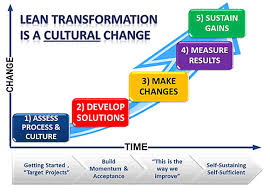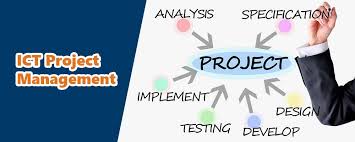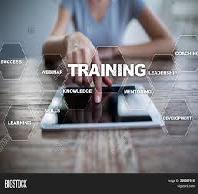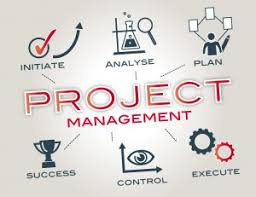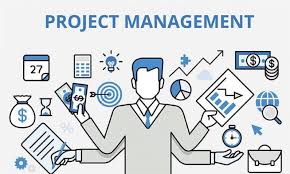The Gag Rule Assignment Group Project This is a group project you only need to do the part that is worldwide access from 2001-2009 this is going to be a presentation and I just need important facts on the worldwide access from 2001-2009.
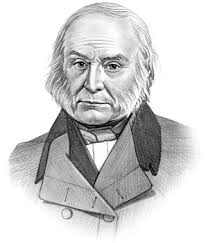
Saman Tanveer, Zayda Villatoro, Alexander Oquendo, Aaisha Jamiluddin, Kailey Cheng
THE GAG RULE PRESENTATION NOTES
LINK TO INFOGRAPHIC: https://create.piktochart.com/output/37122202-gag-rule
What is it? Explain what title X means and how it relates to the gag rule (Saman)
Source: Trump’s Title X ‘Gag Rule’ Will Disproportionately Affect Women of Color.
– First promulgated under the Reagan administration but rescinded by the Clinton administration in 1993. From there, President George W. Bush reinstated it and then President Barack Obama again revoked again it in 2009.
– Also known as the Mexico City Policy, this “rule” is a direct target on women’s reproductive rights by blocking global health assistance to foreign organizations who use their own, non-U.S. funds to provide information, referrals, or services for legal abortion or to advocate for access to abortion services in their own countries.
– According to Planned Parenthood, with the new rule, health care providers would need to decide if they want to withhold information from their patients or be forced to leave the program and forgo funding. There’s a 60-day window after official publication before the rule goes into effect and can then be challenged in court.
– It prohibits performing, counseling, referring, or any advocating on abortion, even if the activities are supported with non-U.S. funds
– Affects nongovernmental organizations
– Executive branch policy imposed under presidential authority
– Remains in effect until rescinded by the President
Comprehensive Service Providers- Defunds comprehensive Sevice Providers
– Health facilities provide fewer services
– Clinics increase fees or are shut down
– Women are unable to access reproductive health care
– Fewer people in communities are served
– Results in more unintended pregnancies, maternal deaths, and abortions
– Title X (Source Domestic Gag Rule Fact Sheet)
– The family planning program that has served as the nation’s only dedicated source of federal funding for family planning.
– Essentially, it is illegal for health care providers who receive federal Title X funding to give referrals for abortions.
– Prohibits Title X-funded health centers from sharing finances, staff, or a physical location with an abortion provider. Title X-funded sites were further mandated to provide all pregnant patients with information on prenatal care and social services, regardless of what options the patient wanted to pursue. Opponents of the rule call this regulation the “domestic gag rule.”
When did it start? (Reagan administration/referred to as the Mexico City Policy) (1984-1993) (Zayda)
Source: http://trumpglobalgagrule.pai.org/history/a-bad-policy-is-born/
– It was initially announced in 1884 by the administration of president Ronald Reagan at the international conference on population in Mexico city, which is why it is also known as the mexico city policy.
– President Ronald Reagan was the first president to be elected on an anti-choice party platform and therefore felt obligated to do something for the anti choice movement
– Many countries allied themselves with the U.S; countries such as Iran, Vatican, Libya, Syria, and Sudan in opposition to women’s access to abortion information and services.
– This policy was broken down into three potentially dangerous restrictions:
– It withheld US family planning funding technical assistance from foreign non-profit organization; this included:
– reproductive health organizations
– private hospitals
– clinics that preformed or promoted abortions.
– Forbade NGOs that receive US funding from advocating legalization or decriminalization of abortion.
– Countries in which abortion was allowed, it forbade workers at NGOs that received funding from offering abortion as an option or referring women to and abortion provider .
– It often forbade health workers from counseling women on all legal pregnancy options.
– This put women’s health at risk which hurted the providers credibility because not all options were presented to the patients which often forced women to risk their lives with unsafe abortions.
– The international Planned Parenthood federation and Marie Stopes International refused to comply with the new policy which led them to lose their US funding.
Infographic part:
– Announced in 1984 in Mexico City
– Many countries united with the new policy
– Various restrictions were implemented which took a toll on women’s health
Playing politics with women’s health (1993-2001) (Aaisha)
FOR INFOGRAPHIC:
? Ever since its creation, the Global Gag Rule has been a highly politicized issue
? Republican and Democratic parties continue to instate and rescind the policy
? Health providers and global organizations were reluctant to take American funding out of fear that it could be cut off due to politics in DC
Journal article: https://www.tandfonline.com/doi/full/10.1016/S0968-8080%2804%2924140-4?scroll=top&needAccess=true
Worldwide access denied (2001-2009)(kailey)
What’s currently going on in the trump administration//why did it only now go into effect//republican vs democratic debate 2009-currently) (Alexander)
Trump’s Gag Rule Would:
– Allow doctors to withhold information about abortion from their patients
– Block people from preventive care at Planned Parenthood
– Violate basic medical ethics
UNPLANNED PREGNANCIES (Saman)
– Do not confuse unplanned pregnancies with unwanted pregnancies
? Handling an Unplanned Pregnancy
– 3 options
– Termination
– Carry baby to term and keep the child: Many sacrifices must be made
– Carry baby to term and have the child adopted
– Women may be concerned with financial and emotional support from the baby’s father, family, or friends
– Family planning clinics, crisis pregnancy centers, and health departments have programs to meet these needs
? Adoption: would like to carry the baby to term but does not want to raise the child.
– Open: birth mother has some role in the child’s future
– Closed: the entire process is confidential.
– Public: less costly, but can be competitive and require long waits for adoptive parents.
– Parents have more flexibility about age, gender, race about the child they are willing to adopt
– Private: Can be faster, and allow adoptive parents and birth mothers to have more options in selecting each other.
– involve financial arrangement negotiated by an agency or lawyer b/w adoptive parents and birth mother.
? Abortion: spontaneous or induced expulsion of an embryo or fetus before it is viable to can survive on its own.
– Most common medical procedures undergone by women of reproductive age
– Can occur without human interference
– Natural compilations: genetics, medical, or hormonal problems result in spontaneous termination of the pregnancy also known as miscarriages.
– Induced abortion: decisions to terminate a pregnancy by medical procedures
– Reasonings for getting an abortion varies: could be due to learning they have a potentially deadly ectopic pregnancy or that the fetus has a genetic disorder, neural tube defect, or some type of malformation.
– Women with unwanted pregnancies earliest methods of inducing abortion were in dangerous ways or ways in which it was to control women such as strenuous physical activity, starvation, mechanical methods, and more.
– Hyde Amendment (1976): Congress banned Medicaid funding for abortion unless a woman’s life was in danger. A compromise was added in reports of rape and incest cases
– Rust v. Sullivan (1991): prohibited federally funded clinics from providing information about and referrals for abortion
– Planned Parenthood of Southeastern Pennsylvania v. Casey: reaffirmed the central holdings of Roe v. Wade, but allow states to restrict abortion access.
? Decrease in Abortion Rates:
– Education, lower female population is of childbearing age, reduced access to abortion services, change in attitudes toward abortion, more frequent decisions to continue unplanned pregnancies
? In-Clinic Surgical Abortions
– Vacuum curettage aka manual vacuum aspiration
– Most widely used
– Under anesthesia
– Dilate cervix and insert the vacuum
– Performed in the 1st trimester up to 20 weeks after conception
– Dilation and evacuation (D&E)
– Can be used up to 16 weeks from the last period
– Sharpe curette is used to scrape out the contents of the uterus
– Under anesthesia
– Rarely used in abortions because it is more painful, causes more blood loss, and requires larger cervical dilation
? Medical Abortion
– Abortion with pills
– Safe, less invasive than surgical procedures
– Two drugs: mifepristone (blocks the action of progesterone, necessary for maintaining pregnancy) and misoprostol (induce contractions and expel the fetal tissue — heavy bleeding and cramping) can end an early pregnancy
OUTSIDE SOURCE:
Beckman, L. J. (2017). Abortion in the United States: The continuing controversy. Feminism & Psychology, 27(1), 101–113. https://doi.org/10.1177/0959353516685345
Pro-Abortion: Pro-Choice: Abortion Rights
– Support abortion view it as a right required for social equality for all women
– Pro-abortion proponents believe women’s empowerment requires that they have control over their bodies, including the right to end an unwanted pregnancy. Therefore, reproductive health policy must enable women’s access to safe, legal abortion.
Anti-Abortion: Pro-Life
– Oppose abortion see it as a threat to motherhood, morality, and social cohesion.
– Most anti-abortion advocates believe that personhood begins at conception; therefore legalized abortion is a threat to social, moral, and religious values. For them, abortion ignores the sanctity of human life, involves the murder of a living being and hence is morally reprehensible.
– There has been a dramatic drop in abortion rates in the US over the last few decades. Since rates peaked in 1981, the incidence and rate of abortion have shown a significant long-term decline.
– While abortion rates have fallen, the public’s attitudes about whether abortion should be lawful in various situations have remained relatively stable
– Rowe v. Wade – legalized abortions in 1973
– recognized that women under the constitutional provision of privacy had a right to make their own personal medical decisions including the right to have an abortion (fourteenth amendment)
– Ruling limited state interventions in second-trimester abortions and left the third-trimester abortions up to each individual state
– Today there are a much greater number of state laws limiting abortion
– The ACA allows states to restrict coverage for abortion in insurance plans that are part of their exchange marketplaces; as of September 1, 2016, 25 (50 percent) of the states have done so.
The Gag Rule Assignment Group Project References
A Bad Policy is Born – 1984-1993 « PAI – Gag Rule. (n.d.). Retrieved March 3, 2019, from http://trumpglobalgagrule.pai.org/history/a-bad-policy-is-born/
Beckman, L. J. (2017). Abortion in the United States: The continuing controversy. Feminism &
Psychology, 27(1), 101–113. https://doi.org/10.1177/0959353516685345
Crane, B., & Dusenberry, J. (2004). Power and Politics in International Funding for Reproductive Health: the US Global Gag Rule. Reproductive Health Matters, 12(24), 128-137. doi: 10.1016/s0968-8080(04)24140-4
Domestic Gag Rule Fact Sheet. (2018, May). Retrieved from
https://www.nationalfamilyplanning.org/file/Domestic-Gag-Rule-Fact-Sheet—May-2018.pd
Feller, M. (2019, March 01). Trump’s Title X ‘Gag Rule’ Will Disproportionately Affect Women
of Color. Retrieved from https://www.elle.com/culture/career-politics/a26577681/trump-title-x-gag-rule-planned-parenthood/




